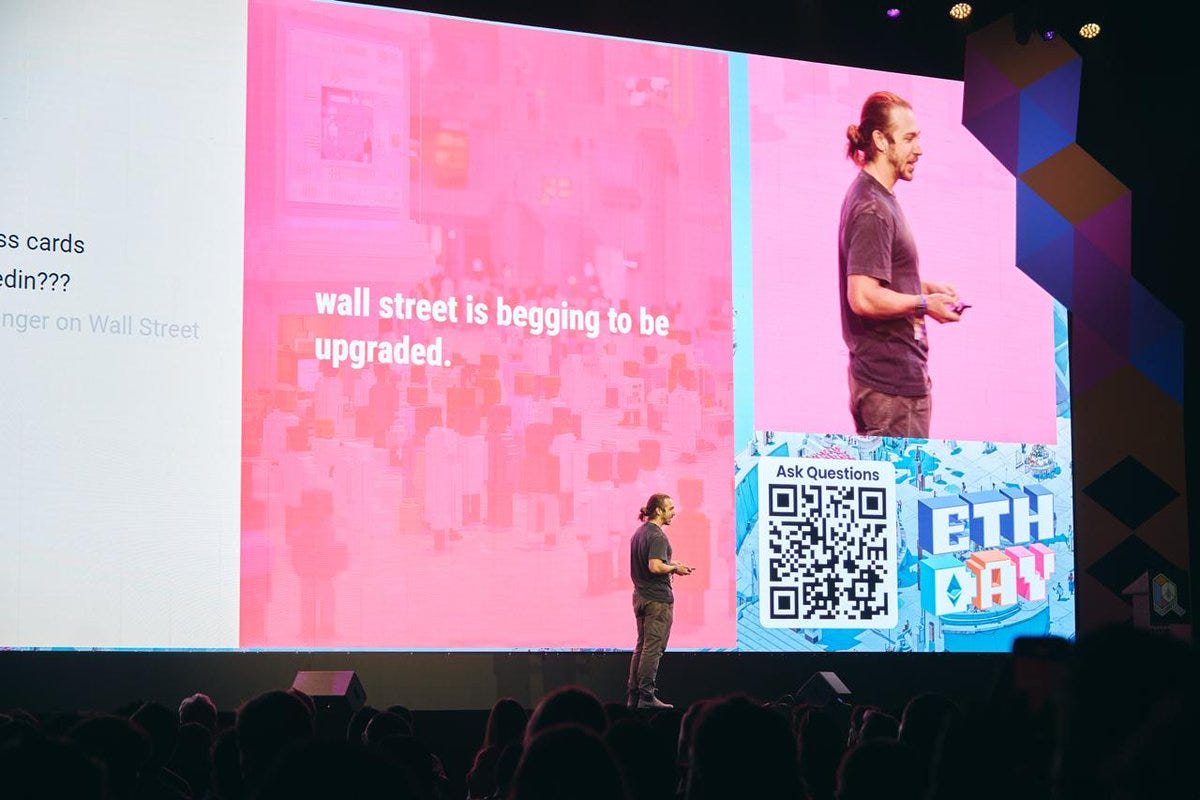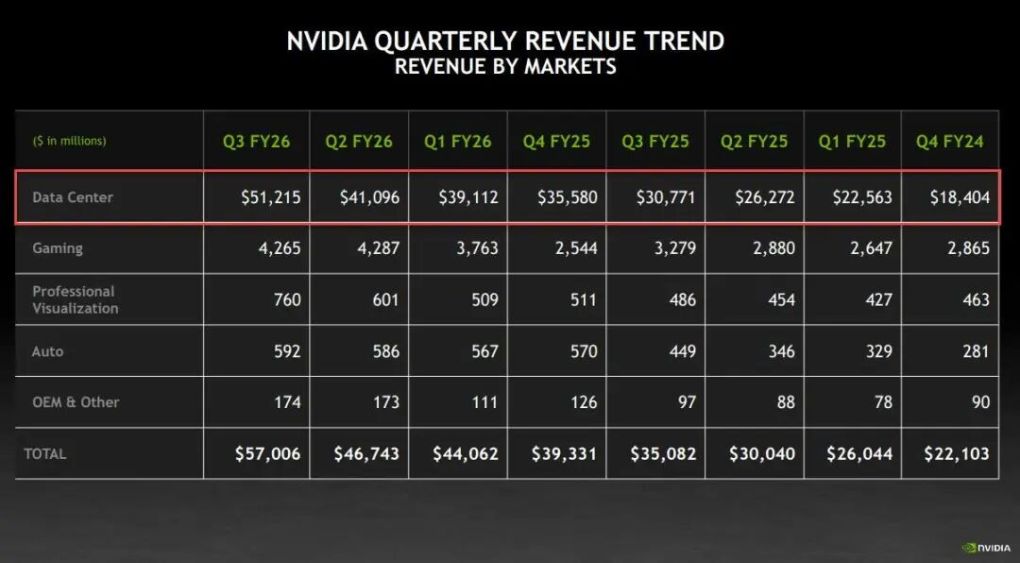Danny Ryan: Wall Street needs decentralization more than you think, and Ethereum is the only answer
A former Ethereum Foundation researcher provided an in-depth analysis at the Devconnect ARG 2025 conference, exploring how eliminating counterparty risk and building Layer 2 solutions could support 120 trillion USD in global assets.
Former Ethereum Foundation researcher delivers an in-depth analysis at Devconnect ARG 2025: How to carry $120 trillion in global assets by eliminating counterparty risk and building L2s.
Compiled by: Pan Zhixiong
The most surprising discovery for me is: Wall Street actually has a strong demand for decentralization.
This sounds counterintuitive. We, the cypherpunks and crypto natives, care about decentralization, but the general public seems more interested in speculating on stablecoins or chasing memecoins on-chain. It seems like no one cares about this? But Wall Street does.

Danny Ryan is the co-founder of Etherealize and a former core researcher at the Ethereum Foundation. At Devconnect ARG 2025, he shared profound insights from his transition from protocol development to institutional applications.
Introduction: From Protocol Research to Viewing the World Through a "Banking Lens"
Long time no see. I missed the last Devcon, and that was the only thing I could say about Ethereum at the time.
I have worked in the field of decentralized systems for several years, building Ethereum, researching mechanism design, decentralization, security, and resilience. Now, I deal with banks every day. It's a bit strange, but actually very interesting. I've learned a lot, and they've learned a lot from us. For example, I was surprised to find that business cards are still in use, and everyone uses LinkedIn. Although I haven't registered for LinkedIn (I'm pretty sure my colleagues aren't happy about this), Wall Street still relies on these tools.
Speaking of Wall Street, "Wall Street" is no longer really on Wall Street. Apart from the New York Stock Exchange, most other institutions have moved to Midtown, among the art galleries.
Current Situation: Traditional Financial Markets Are Highly Inefficient
We usually think institutional markets are highly efficient. You might think online instant trading is easy, but in reality, stock trades take a day to settle (T+1)—and that's the most efficient it gets. If you look deeper, you'll find institutional markets are full of inefficiencies and manual steps.
The technology stack is extremely fragmented. An asset manager might use one software to manage positions, another for trading, and a third for compliance, all requiring complex integrations. It's like a "Frankenstein" disaster of cobbled-together software. Some institutions even still send faxes to each other. Settlement and other key activities take too long. Settlement takes two days, and even that was a "huge victory" when it was upgraded from T+3 to T+2 a decade ago.
In the Ethereum world, trading and settlement happen simultaneously—this is our innate advantage.
Traditional systems are full of systemic counterparty risk. The architecture is over a hundred years old, with legal burdens layered on top, and even more burden on intermediaries. From an anthropological perspective, it's a miracle humans built such a system. But now we have better technology—it's time to fix it.
Core Insight: Institutions Have a Real and Practical "Craving" for Decentralization
The most surprising discovery for me is: Wall Street (referring to institutions) actually has a strong demand for decentralization.
This sounds counterintuitive. We, the cypherpunks and crypto natives, care about decentralization, but the general public seems more interested in speculating on stablecoins or chasing memecoins on-chain. It seems like no one cares about this? But Wall Street does. Let me "translate" the reasons for you from their perspective:
- Eliminating Counterparty Risk: One of the key perspectives for institutions is "Who might screw me over?" From trading counterparties to correspondent banks to infrastructure, every layer has risk. Decentralization and credible neutrality at the infrastructure layer can greatly reduce or even eliminate this risk.
- Uptime: This is crucial. They require 100% uptime. Ethereum can achieve this because there are dozens of clients and thousands of nodes running. This isn't by accident—it's intentional design.
- Scarce Crypto-Economic Security: Only a handful of decentralized systems in the world can provide the security needed to carry "trillion-level" asset classes. I'm not talking about a few hundred bucks from retail investors, but hundreds of billions of dollars in global assets. You can't just spin up a system tomorrow and have this level of security. Ethereum possesses this scarce resource.
- Mature Application Layer: Ethereum has been running for ten years. If you talk to banks, as long as someone internally understands a bit about blockchain, they're referring to EVM and Solidity. They need mature security and application standards, not the latest hot software that pops up tomorrow.
- Privacy: This is something I value highly. Building privacy for institutions is the "Trojan horse" for advancing privacy narratives across blockchain as a whole. For institutions, privacy is the ticket to entry (table stakes), not just a cool bonus feature. If privacy isn't solved, there's no way to talk about market upgrades. When Institution A and Institution B trade, they can't directly disclose their positions—this doesn't align with market operation norms. Fortunately, Ethereum's investment in cryptography (especially zero-knowledge, ZK) is currently in the hundreds of millions, and our investment in scalability (compressed computation) has unexpectedly brought privacy benefits.
- Network Effects and Liquidity: Capital tends to flow where it aggregates. With the widespread adoption of stablecoins, Ethereum is far ahead in this area.
- Intermediate Infrastructure (Layer 2): This is very important. When I explain Layer 2 to institutions, they're very eager to buy in. Banks want to build customizable and scalable systems, but also want these systems to connect to Ethereum, the internet of value.
When you truly engage with institutions and fill the cognitive gaps, you'll find: Wall Street needs Ethereum.
The Real World vs. The Speculative World
As a developer, it can sometimes be frustrating. You work hard to build unstoppable, decentralized systems, only to see people flock to meme tokens issued by multisig wallets controlled by "three guys in a basement." You worry that no one cares about decentralization.
But institutional demand for decentralization is actually a window into the real world. If it's just speculation, people do matter; but if you're talking about putting pensions and property deeds on-chain, the real world will forcefully demand decentralization. In these scenarios, you must provide security equal to or greater than existing systems.
Strategic Shift: From "Simple Explanation" to "Building Better Products"
The Ethereum community is very good at building infrastructure and mechanism design, but we need to go beyond the "if you build it, they will come" mentality.
We can't just explain to institutions why they need decentralization. We need to assume global assets will go on-chain. What to do? Not just simple tokenization, but building systems better than existing ones, so that global assets must move on-chain.
Value collaboration can be divided into two stages:
- Simply Better: Faster, cheaper, less reliance on trusted intermediaries, more user-friendly interfaces.
- Extended Ecosystem: Asset simplification, DeFi composability, etc.
We often focus too much on the second point, but we need to spend more effort on the first. Current institutional products may look elegant on the surface and have powerful reporting features, but their underlying systems are still in the Stone Age. By leveraging blockchain features (like atomic settlement), we can make products fundamentally better in terms of time. Only by excelling at the first point can we attract long-tail assets into the innovative areas of the second point.
Gradual Success: Trillion-Level Assets and Market Growth
We should measure success in "trillions." Currently, so-called RWA (real-world assets) on Ethereum amount to about $18 billion. By the way, if you talk to institutions, they don't call it RWA, just "assets." The global asset management scale is estimated at $120 trillion. If we want to put the global economy on-chain, we must mobilize institutional capital.
Another standard for success is influence and market evolution.
This includes two stages:
- Rewire: Use Ethereum and Layer 2 programmable settlement rules to eliminate manual checks. For institutional markets, Ethereum is already "fast" (compared to T+1 settlement).
- Evolve: Expand market access. Current markets are highly subsidized, sometimes due to legal reasons, sometimes just to play small circle games. But with on-chain products and DeFi, we can allow more people to participate—this is a positive-sum game. Institutions want to manage more assets, and the public wants access to financial products.
Conclusion: The Most Important Work
I love working on the most important problems. Right now, I'm working on institutional adoption of Ethereum every day. This includes filling cognitive gaps, explaining why not to use those DeFi-less, strange and closed "privacy chains," but to build on Ethereum.
We need to truly build, design native environments, understand asset flows, legal complexities, and our compliance. If we don't do this, we'll hand over the global economy to others. If we want to change the world, it's time to bring the world onto Ethereum.

Live Q&A
Q1: When talking to institutions, what is the biggest misconception about Ethereum decentralization?
Danny: Institutions are increasingly understanding now. They have a kind of FOMO (fear of missing out), worried that fintech will eat their lunch. The main misconception might be that "decentralization" means "lawlessness" or "no control over access." In reality, the on-chain environment is highly valued, and you can set rules. This fear is turning into a concern about falling behind, which is a great opportunity for builders.
Q2: What advice do you have for developers who want to enter the institutional field?
Danny: Just like understanding the Ethereum tech stack, Wall Street is also a complex beast. My advice: find a partner. A friend who trades on Wall Street but wants to learn about decentralization—combine your strengths.
Q3: As adoption increases, is there a risk that Ethereum will be "co-opted" by institutions?
Danny: Of course there is. We need to introduce global assets while maintaining Ethereum's core global, diverse, and decentralized nature. As long as we retain the ability to "fork," there is no risk. I'm not an "ossificationist"—I think there's still a lot of work to do, but we must be very careful when introducing assets.
Q4: How do you ensure the right narrative is conveyed to institutions?
Danny: We work together. The Ethereum Foundation forming an enterprise group is a great first step. But when it comes to hundreds of key companies and hundreds of trillions in assets, we can't go it alone. We need to unite in narrative and education to ensure our voice is at negotiation tables around the world.
Q5: What is something you know now that you wish you had known at the beginning?
Danny: Language translation. For example, when I talked to the former head of oil at JPMorgan about "RWA," he didn't understand at all, because to them that's just "assets." And "atomic settlement"—they have no concept of that, because in traditional finance, asset delivery and fund payment are often separate (sometimes to earn interest on asset-liability mismatches). You need to learn their language and provide the right "translation" for them.
Q6: What is something that makes institutions' eyes light up?
Danny: Layer 2 (L2). This really resonates. Compared to swimming in a big public pool, institutions love the idea of having sovereignty (building their own L2s with partners) while still connecting to the Ethereum ecosystem.
Q7: How do you view ecosystem collaboration?
Danny: Over the past year, I've been too focused on burying my head in work, and collaboration has decreased—this needs to be addressed. As global assets go on-chain, it's not just about infrastructure; every part of the ecosystem—DeFi, on-chain lending, capital, compliance stack—needs to be fully utilized. Everything we've built over the past few years has been for this.
Disclaimer: The content of this article solely reflects the author's opinion and does not represent the platform in any capacity. This article is not intended to serve as a reference for making investment decisions.
You may also like
Nvidia ignites on-chain frenzy as AI and the crypto market dance together

Bearish Bitcoin signal fires, raising chance for a 77% price drop

Bitcoin futures traders refuse to capitulate even as BTC price drop to $89K

Trending news
MoreNvidia ignites on-chain frenzy as AI and the crypto market dance together
[Bitpush Daily News Selection] Nvidia's earnings data exceeds expectations, Bitcoin rebounds to $91,500; Federal Reserve meeting minutes reveal serious internal divisions; BlackRock registers iShares Staked Ethereum ETF in Delaware

![[Bitpush Daily News Selection] Nvidia's earnings data exceeds expectations, Bitcoin rebounds to $91,500; Federal Reserve meeting minutes reveal serious internal divisions; BlackRock registers iShares Staked Ethereum ETF in Delaware](https://img.bgstatic.com/multiLang/image/social/fadd70aee7e729003cd875574b9131501763562061433.png)